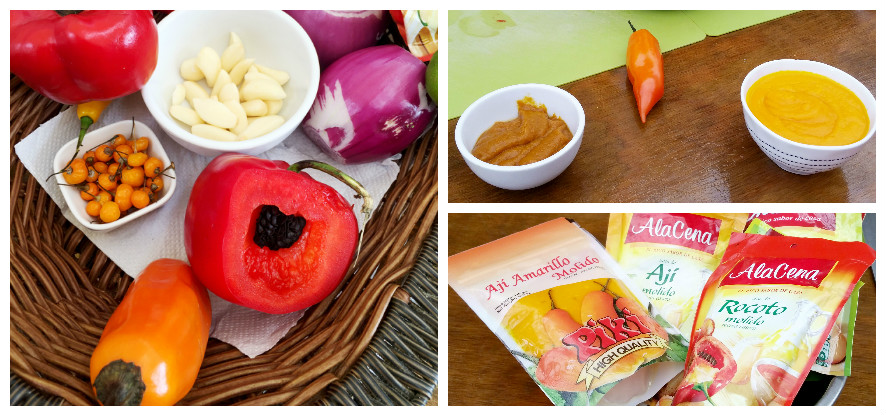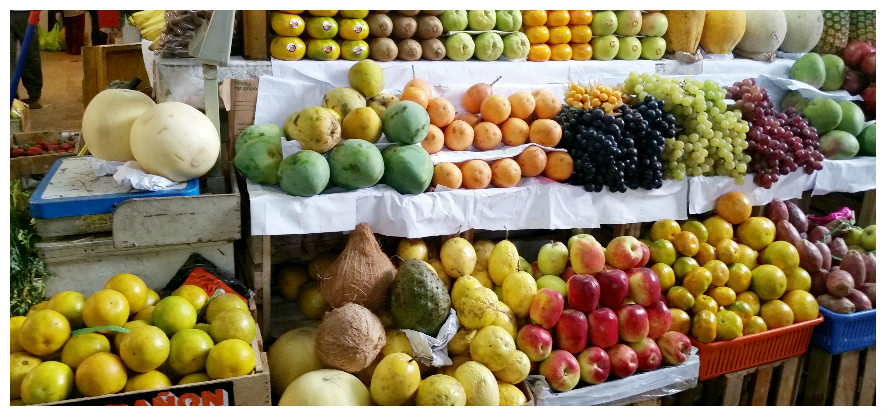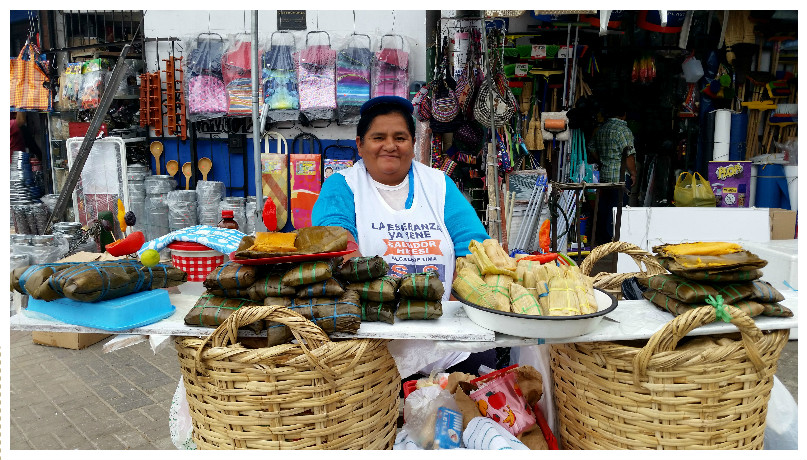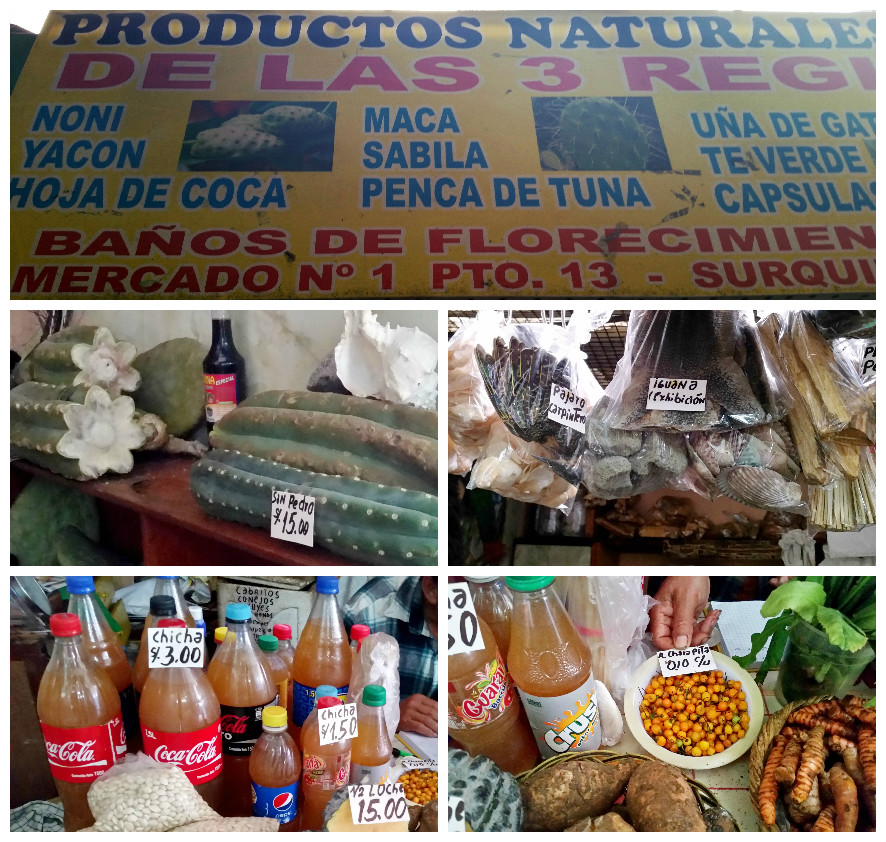Did you know that there are about 3,800 types of potato native to Peru? Or that the large influx of Chinese immigrants brought rice over and began farming it, making it a large part of Peruvian cuisine? Or that rice and potatoes are often in the same meal? (Add to that yucca, banana, beans, corn, and you’ve got no shortage of carbohydrates!)
We got a firsthand look at Surquillo market #1, and just a few of the thousands of potatoes during our market tour + cooking class.
Being on the coast, Lima is well known also for it’s fantastically fresh seafood. It’s ceviche city! We learned that all citrus was introduced to the Americas from Asia and Europe. Before the lime, they used tumbo, or banana passion fruit, since it’s so sour (though it’s only got a little bit of juice around the many seeds). How can you tell if a fish is fresh? Clear eyes, red gills, firm flesh, and a spine that’s tough to pull out.

Since we arrived to the market before the tour started, we had time to enjoy a tamal from one of the street vendors. I think it was 2 soles for a tamal with beans (on the right in corn husks in a white bowl).
It was like so many other central markets we’ve seen by now they had fresh fruits, meats, cheeses, and dried grains in piles and piles!

Some of the most interesting stalls in the market belonged to the natural healing markets. You can find things like whole dead woodpeckers (see photo below), iguana skins, feathers, cactus, homemade chicha (likely the fermented/alcoholic kind), alpaca jerky, and more.
There’s a high number of Asians in Peru, from a history of slavery (must look into this history lesson). But the vegetables like long beans, Asian cabbages and other foods are easy to find here as well.

Ají amarillo (yellow pepper) is the taste of Peruvian cuisine. The peppers are sold fresh, dried, as well as in paste form (the middle paste in the picture of spices above). When dried they’re called ají mirasol (pepper looking at the sun). They have remarkably different tastes, so much so that our chef said it’s common for people, Peruvians included, to think they’re different peppers entirely. Fresh or dried, they’re used as a flavoring in many traditional dishes.
Another pepper that rivals the ají amarillo in popularity is the rocoto pepper. It looks more or less like a red bell pepper, but with a smaller, thinner stem and black seeds on the inside. Interestingly the rocoto can vary in heat from barely spicy at all, to spicier than a habañero, with no way of knowing.

Every eating establishment has a housemade ají and it can be spicy, chunky, blended, or anything in between. We’ve encountered creamy sauces to more vinegar-y sauces that vary greatly in heat.
After a good look at produce and the market, it was on to the cooking class where we were going to make several sauces of our own.



The produce looks so fresh! So much to choose from, so many exotic goodies! Reminds me of Grand Central Market, downtown, long ago, where the neighborhood could shop for essential ingredients.
Yes! I love that everywhere we’ve been so far there’s a central market with the freshest stuff available.